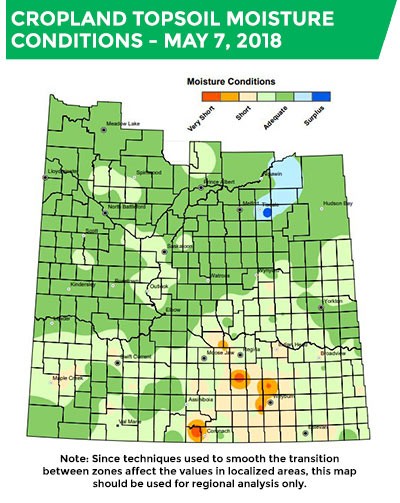Growing Crops in Below Average Moisture – Part 1
Winter 2017–18 was cold, with little snow fall, and spring has begun as a very dry season with many predicting another drought year. Call it climate change, global warming, or any other term you prefer, but our growing conditions across the prairies are becoming hotter and drier.
The change in weather patterns, especially rainfall, is exposing many regions around the world to drought conditions. According to the Prairie Adaptation Research Collaborative (PARC): “…potential negative impacts include changes in the timing of precipitation, more intense precipitation events, the emergence of new pests, and, especially, the increased frequency and intensity of droughts.”
With that in mind, Western Canadian farmers will need to adapt to these new weather patterns and implement different farming practices to preserve their crop yields and quality. The current conditions have producers wondering – how does one mitigate drought stress on crops?
Building Stronger Roots

Professor Jonathan Lynch from Penn State University conducts research on how to make crop plants better able to grow in dry, low-nutrient soils. His research suggests enabling roots to reach more sources of water and nutrients in soils helps develop a healthier root structure, which can improve the ability of plants to produce good yields under stressful conditions.
Dr. Abdel El Hadrami, CEO and R & D Director for OMEX Agriculture Inc. concurs, pointing to technologies that drive root system growth as the most effective way to help the plant survive a lack of subsoil moisture at seeding. According to Dr. El Hadrami, a Primer containing essential nutrients for root development and growth, like phosphorus and manganese, is essential at the start of the growing season, especially when seeding into challenging soil conditions.
“Phosphorus and manganese are called ‘the root makers’ and are important to drive deeper root growth,” says Dr. El Hadrami. “In drier years, the roots deepen their exploration of the soil profile in search of moisture and without these key essential nutrients root growth stops and so does the above-ground biomass.”
In a drier year, it’s tempting to put the seed closer to soil moisture by seeding deeper (2-3 inches), but this practice can prove to be risky, especially for crops such as soybeans. If planning to plant all the way to 3 inches, Dr. El Hadrami recommends using a Primer on the seed with essential P, K, Zn and Mn, or strategically placing phosphorus with essential micronutrients in-furrow while seeding.
“This will help drive a faster growth to the surface of the soil and set a good root system,” he says. “Seeds absorb about 50 per cent of their weight in water to germinate, activate the starch conversion and elongate a radicle and hypocotyl that will become roots and shoots. The lack of water at these early stages of growth and development result in poor hypocotyl elongation, which slows down emergence and establishment.”
But, what if drought conditions persist? In the second of this two-part series, we take a look at the role liquid foliar fertilizers play when growing crops in below average moisture. Click here to read Growing Crops in Below Average Moisture – Part 2
Image credit: Province of Saskatchewan
